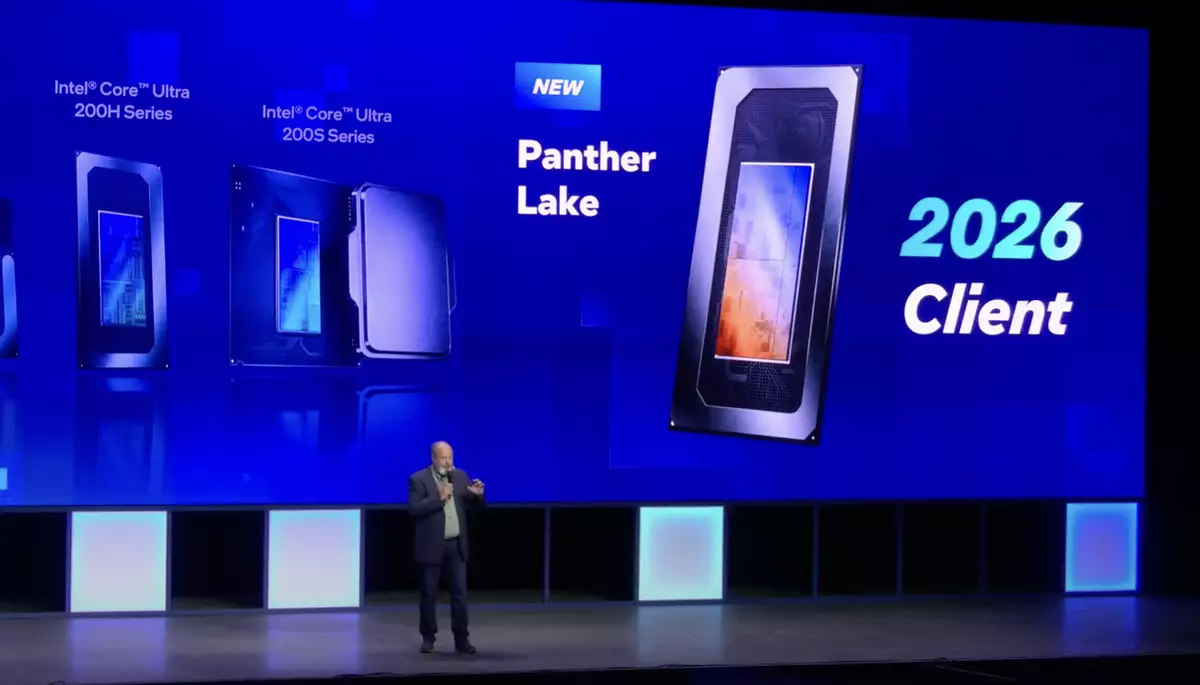Intel, a giant in the semiconductor industry, is at a critical junction as it seeks to regain its status in the tech market. With the presentation of new CEO Lip-Bu Tan at the Intel Vision 2025 event, there was palpable anticipation surrounding the company’s future. However, instead of groundbreaking innovations, the highlight revolved around the confirmation of Panther Lake, an upcoming CPU that embodies both promise and concern. While the announcement of production timelines was made, the tech community is left wondering whether Intel can keep its word this time.
The Panther Lake CPU: A Brief Overview
Panther Lake boasts an intriguing combination of attributes that blend performance and efficiency. According to Jim Johnson, Intel’s head of client computing, this CPU merges the energy efficiency of the Lunar Lake chip with the robust performance found in Arrow Lake, aimed specifically at scaling the revered 18A process technology. Such a synthesis suggests Intel’s aim to truly cater to evolving market demands, particularly among laptop users who prioritize battery life without sacrificing performance.
Yet, as exciting as these attributes sound, it is essential to scrutinize the practical implementation of Panther Lake. The vagueness surrounding the production timeline—projected for late 2025 but not available until 2026—raises red flags about Intel’s ability to deliver transformational products in a timely manner. The gap between production initiation and availability often reveals deeper issues within the production processes or technology supply chains that cannot be ignored.
Challenges in Production: A Pattern of Delays
One cannot overlook Intel’s troubled history with manufacturing timelines. The 18A node, initially set to ramp up by the end of 2024, is now facing a delay of nearly a year. This postponement springs from various issues, including reportedly poor yield rates and fundamental challenges in executing an ambitious technological roadmap. The history of Intel’s 10nm fabrication process, which has long been plagued by delays and production headaches, looms large as a cautionary tale.
This situation is further exacerbated by the absence of the previously planned 20A node, which was canned prior to the latest revelations. Why such setbacks continue is a pressing question, and it necessitates a closer look at Intel’s internal operations and R&D capabilities. The ambitious nature of the 18A technology, particularly with the incorporation of cutting-edge features like backside power delivery, might reflect a penchant for overreaching—a mistake that can stall innovation and slow market competitiveness.
Comparing Competitors: TSMC’s Dominance
Amid Intel’s ongoing struggles, Taiwan Semiconductor Manufacturing Company (TSMC) has firmly established its dominance in the semiconductor market. As Intel grapples with delays, TSMC continues to ship products made with its state-of-the-art N3 nodes and prepares to roll out even more advanced N2 nodes soon. This competitive landscape pressurizes Intel as they must ensure Panther Lake not only catches up but also matches the efficiency and performance offered by TSMC.
As Panther Lake inches closer toward production, the tech community is cautiously optimistic yet skeptical about its market performance. The relentless march of technology development means that any delay could see Intel fall further behind its rivals, reducing its viability among consumers and manufacturers alike.
Looking Forward: What Lies Ahead for Intel?
Intel’s quest to reclaim its distinction as a leader in semiconductor technology remains fraught with uncertainties. The anticipated release of Panther Lake presents both opportunities and risks; clients and stakeholders want reassurance that Intel can deliver on its promises, especially after a history riddled with delays. As the industry converges on high-performance computing and energy efficiency, any misstep could cement Intel’s status as a follower rather than a leader.
Ultimately, Intel’s journey towards revitalization through Panther Lake is one to watch closely. The clock is ticking, and the market awaits a compelling narrative of transformation and reliability. Will they meet the rising expectations, and can they finally turn the tide in their favor? Only time will tell, but with palpable anticipation surrounding their bold ambitions, the next chapter in Intel’s saga is more thrilling than ever.

